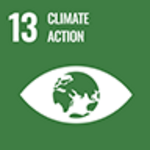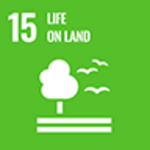

Associate Professor Tomomichi Kato
Affiliation: Graduate Research Faculty of Agriculture, Graduate Graduate School of Global Food Resources (Department of Bio-Environmental Engineering, School of Agriculture)
Specialized fields: plant ecology, micrometeorology
Keywords of research: climate change, CO2 cycle, ecosystem modeling, field observation, remote sensing
Alma mater: Kogyokusha Private High School (Tokyo)
Final academic background: Graduate School of Biological Sciences, University of Tsukuba
HP address: https://terraecomod.wixsite.com/kato-lab-hokudai-j
*This article was originally published in the 4th issue of "Frontiers of Knowledge" and has been re-edited for the web.
Professor Kato's research is also introduced in ``Lecture video ``Carbon (CO2) cycle in ecosystems'' by Hokkaido University faculty.'' *Move to Yume Navi.
Terrestrial ecosystems change the climate
Since it is well known that the types of ecosystems are determined by temperature and precipitation, it is easy to think that the climate controls terrestrial ecosystems. The exchange between the two is called an "interaction". In fact, terrestrial ecosystems such as forests, grasslands, farmlands, savannahs, and deserts exchange substances such as heat, water, and carbon with the atmosphere, and these changes affect the ecosystem itself. Change the surrounding climate.

Single leaf observation at the tower (Japanese cedar forest in Takayama City, Gifu Prefecture). Climb a 30m high scaffold and measure individual leaf data.
When forests are cut down and converted to agricultural land, the reflectance (called albedo) of the ground surface increases and a lot of the energy from the sun is lost. In addition, as the number of leaves decreases, the amount of water emitted by transpiration decreases, and the water retention capacity of the soil also changes, causing changes such as drying the surrounding climate. For example, in the tropical forests of the Amazon and Southeast Asia, where trees have been cut down on a large scale, it is expected that some kind of climate change will occur in the future. In the Siberian tundra, rising temperatures threaten to melt permafrost and release large amounts of trapped methane (the second most important greenhouse gas), accelerating warming. Also, taiga forests that use water supplied by thawed soil in summer may dry out and die. Investigating the temporal and spatial distribution of "interactions" and their relationships with environmental factors in this way will not only help us understand the behavior of the terrestrial ecosystem itself, but also lead to the clarification of changes in the global environment. We are conducting research on the functions of this terrestrial ecosystem using various methods such as field observation, remote sensing, simulation models, and statistical data analysis.
Investigating substance circulation from individual leaves to the global
As photosynthesis takes place, the leaves take in CO 2 through their stomata and release water vapour. The CO2 is then converted to carbohydrates to form plants, and when the plants die and fall to the ground, they are decomposed by microorganisms to form soil, releasing CO2 in the process. . The water that evaporates from the stomata returns to the land or ocean somewhere else as rain. Substances released and absorbed by the ecosystem in this way repeat the cycle of returning to the ecosystem again via the atmosphere, ocean, etc., resulting in the formation of the global climate.

Annual ecosystem CO 2 uptake by eddy covariance in East Asia (NEE; from Kato et al., 2008, GCB).
Negative (blue circle) indicates absorption and positive (red Δ) indicates emission. Most show absorption.
In order to elucidate this circulation, long-term continuous observations of the CO 2 balance between the ecosystem and the atmosphere are being carried out using the micrometeorological "eddy correlation method" (right figure; East Asia as an example). From the three-dimensional wind speed and CO 2 observed by an ultrasonic anemometer and an infrared spectrometer above the canopy at a speed of 10-20 times per second, the flux of CO 2 at 30-minute intervals is obtained. It's a way. Since the 1990s, observations using this method have been carried out at more than 500 locations around the world, and it appears that terrestrial ecosystems are netly absorbing CO 2 from the atmosphere over a short average time (about 10 years). is coming. But what about the future? A simulation model is used to elucidate it. In the research using the carbon cycle model that reproduces the process of CO 2 absorption by individual leaf photosynthesis and the formation of plants and soil, until around 2050, the net CO 2 2 Absorption increases, but predictions vary after that point. This is because some models overestimate and others underestimate increases in CO 2 emissions from soil due to warming (Friedlingstein et al., 2006, J. Climate). Furthermore, the results are expected to be even more complex when 'disturbances' such as forest fires, logging, typhoon fallen trees, land use change and desertification due to overgrazing are taken into account. Therefore, we are currently observing "disturbance" events and developing models that take them into account.
Research on new observations and models

Solar-induced Chromosomes of the World Observed by Satellite GOME-2
Lofil fluorescence (from Dr. NASA J. Joiner). Red/yellow indicates strong emission.
In recent years, a new index that expresses the photosynthetic activity of plants called sunlight-induced chlorophyll fluorescence has attracted attention, and satellite (right) and terrestrial observations have begun. This makes it possible to grasp the amount of CO 2 absorbed by photosynthesis in the world in real time and in a homogeneous manner. Furthermore, a technology called "data assimilation," which is used in weather forecasting, will improve the accuracy of the model, making it possible to more accurately predict future CO 2 absorption by terrestrial ecosystems. In my laboratory, we are strongly promoting observation and model research using fluorescence, which is very hot in the world, with domestic and overseas research institutes. We are actively looking for students to research with us, so if you are interested, please come and listen to us.

Fluorescence measuring device installed in Mizunara and Betula forest.
Reference book
- Tomomichi Kato and Tomohiro Hashima, 2014. Chapter 1, Global environmental change and terrestrial ecosystems, Ecological Society of Japan eds., Toshihiko Hara eds., Series Modern Ecology, "Ecology of Global Environmental Change", p 1-18. Kyoritsu Publishing
- Tomomichi Kato (translation supervision), 2018. Ecosystem Ecology (2nd edition), pp. 609, Morikita Publishing



















